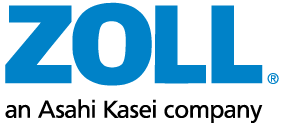November 11, 2013 - ZOLL to Showcase Acute Critical Care and Advanced Resuscitation Solutions at Medica 2013
MEDIA CONTACT: |
Diane Egan |
ZOLL TO SHOWCASE ACUTE CRITICAL CARE AND ADVANCED RESUSCITATION SOLUTIONS AT MEDICA 2013
New Cardiopulmonary Bypass System Protects Critical Organs During Cardiac or Respiratory Failure
November 11, 2013—CHELMSFORD, MASS.—ZOLL Medical Corporation, a manufacturer of medical devices and related software solutions, today announced that its acute critical care and advanced resuscitation solutions will be on display in booth 11E55 during the Medica 2013, 20-23 November in Dusseldorf, Germany.
New to ZOLL’s product portfolio is the LifeBridge® Cardiopulmonary Bypass System, which serves as a powerful method to protect critical organs during acute episodes of cardiac or respiratory failure. The unique advantage of this portable emergency system is that hemodynamic support can be provided immediately to the patient whenever the crisis occurs. Usage can be initiated in the emergency room, in the ICU or in the catheterization lab by any trained health professional within minutes.
Another key product is ZOLL’s Intravascular Temperature Management (IVTM™) system, which offers health care providers the power and control they need to rapidly, safely, and effectively manage the core body temperature of critically ill or surgical patients. The Thermogard XP® delivers accurate, easy-to-use and cost-effective control for both cooling and warming applications. The temperature management system provides a variety of catheter options depending upon the specific patient needs.
Advanced Resuscitation Solutions from ZOLL
Highlights among ZOLL’s clinical portfolio in booth 11E55 include:
- The X Series® and R Series® Monitor/Defibrillators both feature ZOLL’s breakthrough CPR technologies, Real CPR Help® and See-Thru CPR®. The X Series is about half the size and half the weight of competitive full-featured monitor/defibrillators, yet much more powerful and built to the most extensive standards for ruggedness. The R Series Code-Ready defibrillators are designed to extend “Simple, Smart and Ready” defibrillation to every hospital department through advanced, cost-effective solutions for resuscitation.
- The AutoPulse® Non-Invasive Cardiac Support Pump is an automated, portable chest compression device. It is the only mechanical CPR system to have shown improved survival in comparative clinical trials. The AutoPulse more than tripled survival compared to typical CPR during witnessed shockable arrests.1 Most recently a meta-analysis of available clinical findings found that the likelihood of circulation returning was 62% higher with use of the AutoPulse when compared to manual compressions, while a parallel analysis showed no significant change with a conventional piston-driven device.2
- The LifeVest® Wearable Defibrillator is worn by patients at risk for sudden cardiac arrest (SCA), providing protection during their changing condition and while permanent SCA risk has not been established. The LifeVest continuously monitors the patient’s heart and, if a life-threatening heart rhythm is detected, the device delivers a treatment shock to restore normal heart rhythm. The LifeVest is lightweight and easy to wear, and allows a patient’s physician time to assess his or her long-term arrhythmic risk and make appropriate plans.
- RescueNet® Link gives pre-hospital emergency response personnel a single point for information, while simultaneously providing hospital staff with the knowledge to triage incoming patients and assign beds and staff before arrival. For the first time, hospital patient care and EMS operations come together through a single system that delivers real-time access to incident details and vital clinical information.
- RescueNet® 12-Lead is a free web browser-based system that allows rescuers the ability to acquire, store, and transmit 12-lead ECGs from the pre-hospital setting to the emergency department. Open architecture ensures the flexibility to receive 12-lead data from any transmitting or ECG machine.
About ZOLL Medical Corporation
ZOLL Medical Corporation, an Asahi Kasei Group company, develops and markets medical devices and software solutions that help advance emergency care and save lives, while increasing clinical and operational efficiencies. With products for defibrillation and monitoring, circulation and CPR feedback, data management, fluid resuscitation, and therapeutic temperature management, ZOLL provides a comprehensive set of technologies that help clinicians, EMS and fire professionals, and lay rescuers treat victims needing resuscitation and acute critical care. For more information, visit www.zoll.com.
About Asahi Kasei
The Asahi Kasei Group is a diversified group of companies led by holding company Asahi Kasei Corp., with operations in the chemicals and fibers, homes and construction materials, electronics, and health care business sectors. Its health care operations include devices and systems for critical care, dialysis, therapeutic apheresis, transfusion, and manufacture of biotherapeutics, as well as pharmaceuticals, diagnostic reagents, and nutritional products. With more than 25,000 employees around the world, the Asahi Kasei Group serves customers in more than 100 countries. For more information, visit www.asahi-kasei.co.jp/asahi/en/.
Copyright © 2013 ZOLL Medical Corporation. All rights reserved. AutoPulse, Code-Ready, IVTM, LifeBridge, Real CPR Help, R Series, RescueNet, See-Thru CPR, X Series, Thermogard XP, and ZOLL are trademarks or registered trademarks of ZOLL Medical Corporation in the United States and/or other countries. Asahi Kasei is a registered trademark of Asahi Kasei Corporation. All product names are the property of their respective owners.
1Wik L, et al. The impact of CPR duration on survival to discharge between integrated AutoPulse-CPR and manual–CPR during out-of-hospital cardiac arrest of presumed cardiac origin. Resuscitation. 2012;83:e17.
2Westfall et al. Mechanical versus manual chest compressions in out-of-hospital-cardiac arrest. Critical Care Medicine. 2013;41:1-7.
